San Jose shipwreck dubbed ‘the Holy Grail’ is unearthed off the coast of Colombia with $20 billion worth of sunken treasure
- Colombia says the wreckage will be retrieved before President Gustavo Petro’s term ends in 2026
- About 200 tons of gold, silver and emeralds are believed to be on board the legendary Spanish flagship that was sunk during a skirmish with the British in 1708.
- But Colombia faces competing claims from Spain, Bolivia and a US company that claims to have found it first
The ‘Holy Grail of Shipwrecks’, containing up to 200 tonnes of gold, silver and emeralds, could be floating in the Caribbean within months after Colombia declared a national mission to recover the treasure.
The Spanish galleon San Jose sank off the Colombian port of Cartagena after its powder magazines exploded during a skirmish with the British in 1708.
On board were treasure worth up to $20 billion in today’s money, along with 600 sailors, all but eleven of whom went down with the ship.
In 2015, the Colombian government announced that a team of naval divers had discovered the legendary ship in nearly 3,000 feet of water. Last year, another team brought back breathtaking images of its perfectly preserved cargo.
Now the Colombian government has said the proposal will be increased before President Gustavo Petro ends his term in 2026.
The San Jose galleon was owned by the Spanish crown when it was sunk by the British Navy off Cartagena in 1708, and only 11 of its 600-strong crew survived.
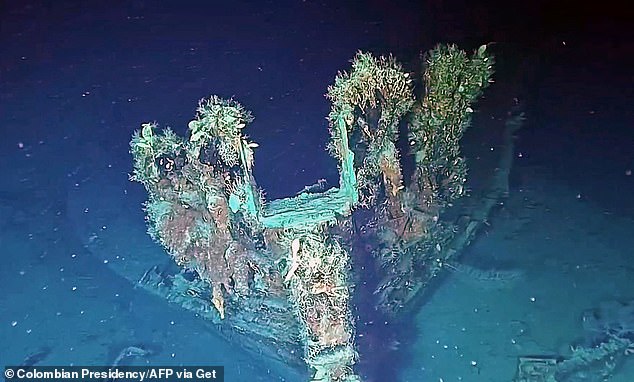
The San Jose was a 62-gun galleon that sank on June 8, 1708, with 600 people on board
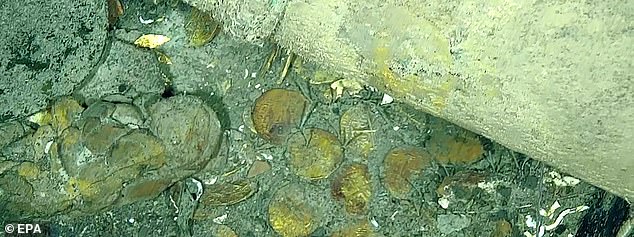
Gold coins were also picked up on the video released by the Colombian government
“This is one of the priorities for the Petro government,” Culture Minister Juan David Correa told Bloomberg.
“The president has told us to pick up the pace.”
The 62-gun galleon was sailing from Portobelo, Panama at the head of a treasure fleet of fourteen merchant ships and three Spanish warships when it encountered the British squadron near Barú.
Spain and Britain were fighting the War of the Spanish Succession at the time, and the Royal Navy was approaching dominance on the high seas when it sank the San Jose.
Images recovered last year show part of the bow clearly covered in algae and crustaceans, as well as the remains of the hull frame.
The images provide the best view yet of the treasure found aboard the San Jose – including gold bars and coins, muddy cannons made in Seville in 1655 and intact Chinese tableware.
Porcelain tableware, earthenware and glass bottles are also on display.
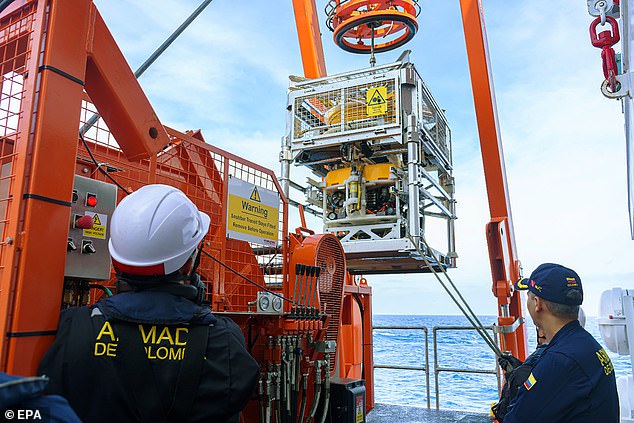
The equipment used to search the remains of the galleon San Jose was submerged nearly 3,000 feet beneath the Colombian Caribbean Sea. It was managed by naval officials

A remotely operated vehicle reached a depth of almost 3,100 meters, allowing new videos of the wreck. Operators found the find untouched by ‘human intervention’
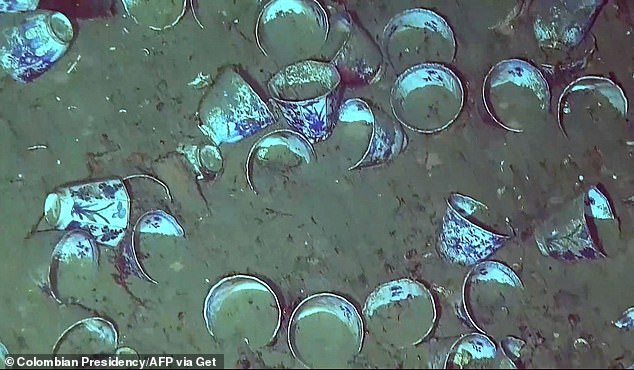
An intact Chinese set of dishes and other tableware were among the ship’s treasures
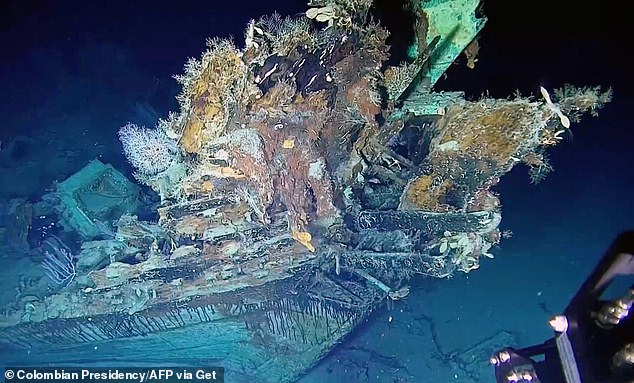
The Colombian military has unveiled images of the wreck of the San Jose galleon, one of the Spanish Navy’s largest galleons, which was sunk with its treasure off the Caribbean coast 300 years ago.
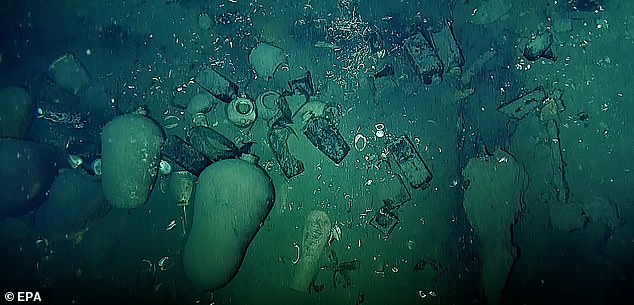
The images provide the best view yet of the treasure found aboard the San Jose – including porcelain tableware, pottery and glass bottles
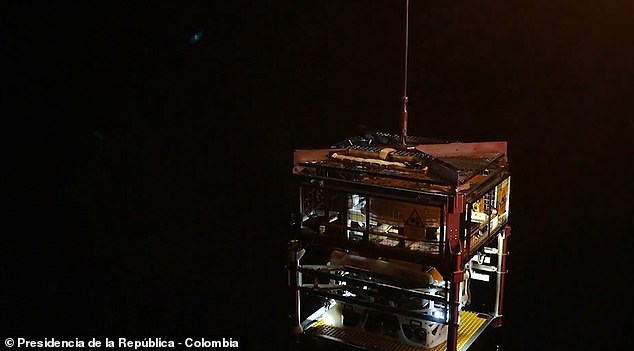
Recovering the ship and its riches will be a challenge due to the depth underwater
The wreck was discovered in 2015 by the Woods Hole Oceanographic Institution, but ownership is disputed by Spain, Colombia and the indigenous Qhara Qhara nation of Bolivia, who say the Spanish forced the community’s population to mine the precious metals. so the treasures should be theirs.
Colombia is also facing a $10 billion claim from US company Glocca Morra, which claims it discovered the wreck in 1981 and handed over its coordinates to the Colombian government with the promise of half the cargo’s value.
Colombia claims a search for the coordinates turned up nothing, but the company – now called Sea Search Armada – believes the country found the wreckage in the same debris field it discovered 34 years earlier.
